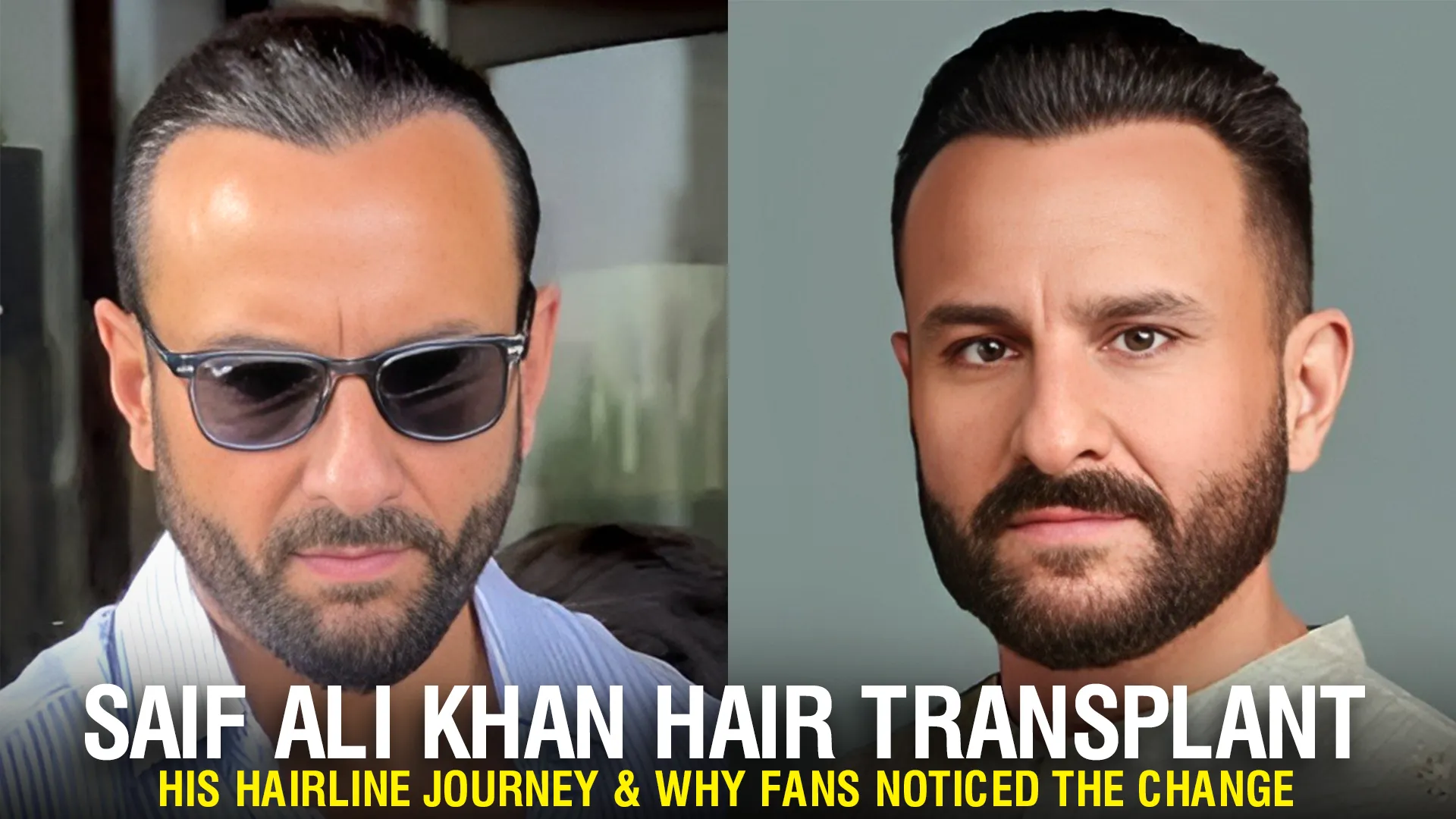Hair loss isn’t just about looks—it affects confidence, identity, and sometimes even our social lives. Whether it’s due to genetics, medical conditions, or age, watching your hair thin or fall out can affect your self-confidence and overall sense of self. That’s why so many people turn to solutions like hair replacement in the hope of regaining their natural look.
But what exactly is hair replacement, and how does it compare to more permanent options like hair transplant? In this post, we’ll break it all down—clearly, simply, and honestly.
What Is Hair Replacement?
Hair replacement is a non-surgical method of restoring the appearance of hair. It typically involves applying a hair system or unit, such as a wig, toupee, or custom-made prosthetic, on top of your existing hair or scalp. These systems are designed to mimic the look and feel of real hair, providing instant results without surgery.
Unlike hair transplants, which involve redistributing your natural hair from one part of the scalp to another, hair replacement doesn’t require any medical procedures. It’s a cosmetic fix, and for many people, it’s a fast and effective one.
Types of Hair Replacement Solutions
There isn’t a one-size-fits-all approach to hair replacement. The market offers several options based on your budget, hair type, lifestyle, and desired level of realism.
1. Stock Hair Systems
These are pre-made and ready to wear. They are affordable and convenient, but they may not perfectly match your hair color, density, or head shape.
2. Custom Hair Systems
Custom units are made to match your scalp, natural hairline, color, and texture. They offer a more natural look and feel but are more expensive and take time to produce.
3. Synthetic vs. Human Hair
Synthetic hair is low-maintenance and affordable but may look less natural. Human hair systems look and feel real, but they require more care and styling.
4. Attachment Methods
- Tape and glue: Semi-permanent but need regular reapplication.
- Clips: Easy to use, ideal for temporary wear.
- Vacuum systems: Use suction to stay in place—great for total baldness.
Hair Replacement vs Hair Transplant: Key Differences
This is where your personal perspective—favoring hair transplant—comes into play. Let’s look at how these two popular options compare.
Feature | Hair Replacement | Hair Transplant |
Method | Non-surgical | Surgical |
Results | Immediate | Gradual (3–12 months) |
Longevity | Temporary (lasts months) | Permanent (lifetime in most cases) |
Cost (initial) | Lower | Higher |
Maintenance | High (frequent upkeep needed) | Low (once healed) |
Natural appearance | Good to excellent (custom units) | Excellent (your own hair) |
So, which is better?
If you’re looking for instant results and non-invasive treatment, hair replacement might work well. But if you’re aiming for a long-term, low-maintenance solution, hair transplant is typically more effective and natural-looking.
Pros and Cons of Hair Replacement
Let’s get real—every solution has its ups and downs. Here’s what you should know:
✅ Pros
- Non-invasive – No surgery, no needles, no downtime.
- Instant transformation – Walk in bald, walk out with hair.
- Flexible style options – Change hair color, density, and style easily.
❌ Cons
- Requires regular maintenance – Cleaning, reattaching, and styling.
- Can be uncomfortable – Especially during hot weather.
- Not permanent – You’ll need replacements every few months.
- Can be costly long-term – Ongoing upkeep adds up.
Who Is Hair Replacement Best For?
Hair replacement isn’t for everyone, but it is ideal for:
- People who aren’t eligible for hair transplant (e.g., insufficient donor hair)
- Individuals dealing with medical hair loss (chemotherapy, alopecia, etc.)
- Those seeking a temporary solution before deciding on transplant surgery
- Anyone who wants a non-surgical option due to health or personal preference
Costs Involved in Hair Replacement
Let’s talk numbers. On average:
- Basic stock units: ₹5,000 to ₹15,000
- Custom systems: ₹20,000 to ₹70,000
- Maintenance (monthly): ₹2,000 to ₹5,000
- Replacement units: Every 6–12 months
In contrast, a one-time hair transplant may cost ₹70,000 to ₹2,50,000, depending on the clinic and number of grafts—but it often lasts a lifetime with minimal upkeep.
How to Choose the Right Hair Replacement Provider
This step is critical. A poorly made hair system can look fake and feel uncomfortable. Here’s what to check before you commit:
- Experience and credibility – Look for trained professionals or clinics with good reviews.
- Quality of materials – Ensure the system uses breathable, skin-safe materials.
- Customization – Your hair system should match your hairline, scalp tone, and style.
- Trial or demo options – Some providers offer sample fittings. Take advantage.
Real User Experiences
Many people have had great results with hair replacement—especially those looking for quick fixes or covering patches due to alopecia. But some report discomfort, sweating, and frequent visits for adjustments.
On the other hand, hair transplant patients often share stories of renewed self-confidence and satisfaction once the transplanted hair fully grows out.
If you’re someone who wants natural results without constant follow-ups, a transplant might be worth considering.
Final Thoughts: Should You Choose Hair Replacement or Hair Transplant?
There’s no universal right answer—it depends on your needs, budget, and lifestyle.
Choose hair replacement if:
- You want immediate results
- You prefer a non-surgical option
- You need a temporary or reversible fix
Opt for a hair transplant if:
- You’re looking for a permanent solution
- You have enough donor hair
- You want natural-looking hair with low maintenance
Conclusion
If you’re dealing with hair loss, it’s important to know all your options. Hair replacement offers quick, non-invasive results—but if you’re looking for something more natural, permanent, and low maintenance, hair transplant could be a smarter investment.
Still unsure which solution is right for you? Reach out to a hair specialist to explore the best path for your hair goals.
FAQs
1. Is hair replacement the same as a wig?
Not exactly. While both are non-surgical, hair replacement systems are typically more advanced, custom-made, and attached securely to your scalp for daily wear—making them look and feel more natural than traditional wigs.
2. How long does a hair replacement system last?
It depends on the quality and how well you maintain it. On average, a hair system lasts 3 to 12 months. Regular cleaning, proper storage, and avoiding heat damage can help extend its life.
3. Can I wear a hair replacement system every day?
Yes! Most modern systems are designed for daily use, including during workouts, sleep, and even swimming, if properly attached. Just remember, regular maintenance is key to keeping it secure and natural-looking.
4. Will people notice I'm wearing a hair system?
With a high-quality custom unit and expert fitting, it’s very hard to tell. The hairline, density, and color all match your natural look, making it nearly undetectable.
5. Is hair replacement better than a hair transplant?
It depends on your needs. Hair replacement offers quick, non-surgical results but requires ongoing maintenance. A hair transplant, on the other hand, is a more permanent solution using your own hair, though it involves surgery and recovery time.

Written By
Dr. Pankaj Khunt
MD – Ukraine
Dr. Pankaj Khunt is a hair restoration expert specializing in non-surgical and surgical solutions. With deep knowledge of what is hair replacement, he offers personalized treatments to restore confidence and hair health through safe, effective, and modern techniques tailored to each patient’s needs.
Disclaimer
We’ve made all possible efforts to ensure that the information provided here is accurate, up-to-date and complete, however, it should not be treated as a substitute for professional medical advice, diagnosis or treatment. See Detailed Disclaimers Here.




